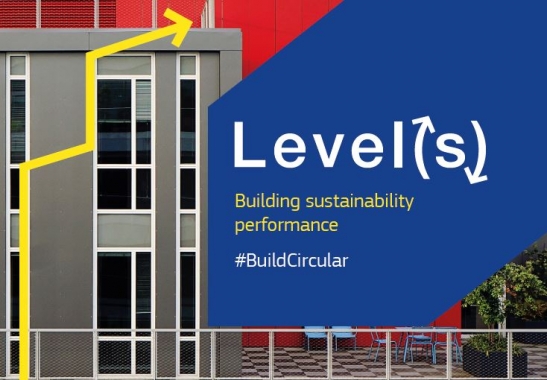A common language for sustainable buildings
Introducing Level(s)
Brussels, 30 June 2017 | Energy
To improve sustainability and drive market demand for better buildings, Level(s) has been developed by the European Commission in close collaboration with stakeholders including Skanska, Saint-Gobain, Sustainable Building Alliance and Green Building Councils.
Level(s) is a voluntary reporting framework that has a broad potential for use by building sector professionals across the EU. It is not a new standalone building certification scheme, nor does it establish performance benchmarks, but rather links the individual building’s environmental impact with resource priorities at European level.
"Level(s) is a key development to help grow the green building market in Europe. We strongly believe it forms the foundations of a new 'common language' for all European green building professionals, which the market must now adopt to help shift standard practice towards 'better practice'. Over time our hope is that 'best practice' certification becomes a reality for many more projects," says James Drinkwater, Director of World Green Building Council’s Europe Regional Network.
Bringing buildings into the circular economy
Read MoreThe buildings sector is a key target in the European Commission’s policy for circular economy; a regenerative economic system in which resource and energy consumption are minimised. As a tool of the circular economy, Level(s) builds upon existing standards to provide a common EU approach to the environmental performance assessment of buildings.
“Level(s) provides an entry point for everyone in the property industry to start, or expand, their reporting and analysis. It provides a consistent, whole life approach to projects and portfolios alike, offering a framework which has been compiled by leading industry professionals across the European Union. It is also the first of its kind, setting out six inter-locking indicators, from simpler resource consumption reporting through to more advanced design parameters,” says Philippa Gill, partner at Vedextra, who was involved in developing Level(s).
Level(s) focusses attention on the most important aspects of a buildings performance, providing a simple entry point to what can be a very complex area. Each Level(s) indicator is designed to link the individual building’s impact with the priorities for circular economy at the European level, including: greenhouse gas emissions throughout the building’s life cycle, resource efficient and circular material life cycles, efficient use of water resources, healthy and comfortable spaces, adaptation and resilience to climate change, and whole building life cycle cost and value.
Step by step
Level(s) enables users to move from simple through to more complex life cycle assessment calculation methods. The entry point to Level(s) is through the common performance metrics: common units of measurement and basic calculation methodologies. To compare the environmental performance of buildings, at a portfolio or national level, Level(s) also offers the option of comparative performance assessment, suitable for building professionals and owner of property portfolios.
For building professionals working at a more detailed level to improve performance and optimise design and as-built performance, the design performance optimisation represents the most sophisticated use of each indicator. To minimise the gap between design, as-built and occupied performance, users can report on the indicators at different project stages: design stage (based on calculations), completion stage (based on as-built drawings), post-completion (based on commissioning and testing), and post-occupancy (based on measured performance).
Ready for testing
After more than two years of work, Level(s) is ready for testing from autumn 2017. Companies, associations and public authorities are warmly invited to participate in testing Level(s). The test period will last for two years and the European Commission will provide technical support during this process.
Participants can test the complete Level(s) framework, or only parts of it, at different stages during a building's life cycle. The feedback from test results will help improving Level(s) ahead of its final release, ensuring that the indicators and the user guidelines are robust and ready to market.
Leave comments